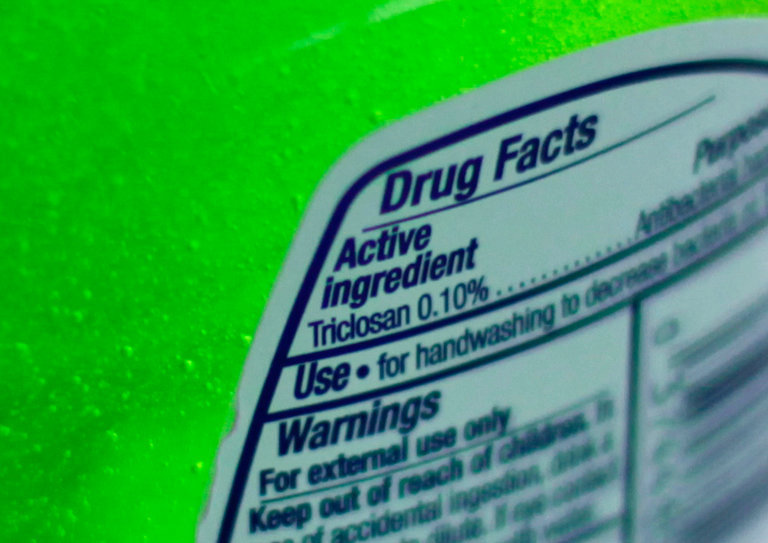What we can learn from the FDA’s new ban on Triclosan
Photo courtesy of New York Times.
This month, the FDA released a statement banning the chemical triclosan from all soap. After extensive research, they determined that the benefits, namely none, from having this endocrine disrupting chemical in our antibacterial products do not outweight the risks. These risks include certain forms of breast cancer, early onset of puberty, and degradation into carcinogenic dioxins in the water supply, among others. Therefore, they gave the industry one year to remove the ingredient from it’s products.
Keep in mind, that means that until mid 2017, this banned chemical still exists in many soaps that you can buy today. Stores are not forced to remove these products from their shelves, and they will likely sell through their existing inventory before ordering the new versions of these soaps that will be inevitably produced. Triclosan also still exists in some toothpaste, from which it is not being forcibly removed. If you are looking for a brand that has never used triclosan, our favorite hand sanitizer and soap has always been Cleanwell. Read an interview with Dr. Larry Weiss, their founder, on antibacterials.
For me, this ban on a chemical Sprout has been warning against for 7 years brings up a bigger point. Just because it is allowed to be sold in America DOES NOT MEAN IT IS SAFE. For years, we have been asked by customers, “If it was that bad, wouldn’t it be banned?” The answer is no. Or hopefully, “not yet.” In America, it takes years for an ingredient to be banned. The burden of proof is on the scientists trying to protect us, not on the manufacturers to prove that their product is safe. According to the EPA, of the nearly 3,000 top-selling chemicals in the US, only 7% have a full set of basic toxicity information. In order to remove a chemical from production, scientists have to prove that it causes damage, something extremely challenging in the case of an endocrine disruptor, which could take years to shows its effects. Luckily, in this case, the scientists have won. Triclosan is banned. What I would ask though is, “Did Triclosan only become dangerous last week?” Obviously not.
This same phenomenon can be seen in the ban on phthalates in children’s toys in 2009 and the ban on BPA in baby bottles in 2012. All of these chemicals showed signs of concern for years, even decades, before the government was able to act. And all of these chemicals remain prevalent in our environment, despite being banned from inclusion in certain specific products.
So what do we do about the next thing that raises concern? What I usually tell people is that if there is evidence enough to be concerned, then “why take the risk?” Don’t bet the health of your family on the government keeping up with the scientists.
So what is the next thing? According to the New York Times, the FDA is currently studying the safety and efficacy of hand sanitizers and wipes, and has asked for data on three active ingredients, alcohol (ethanol or ethyl alcohol), isopropyl alcohol, and benzalkonium chloride. After the scrutiny, will these prove to be safe enough to use around our children?
I wouldn’t bet on it.
Read more on benzalkonium chloride and other similar chemicals.


